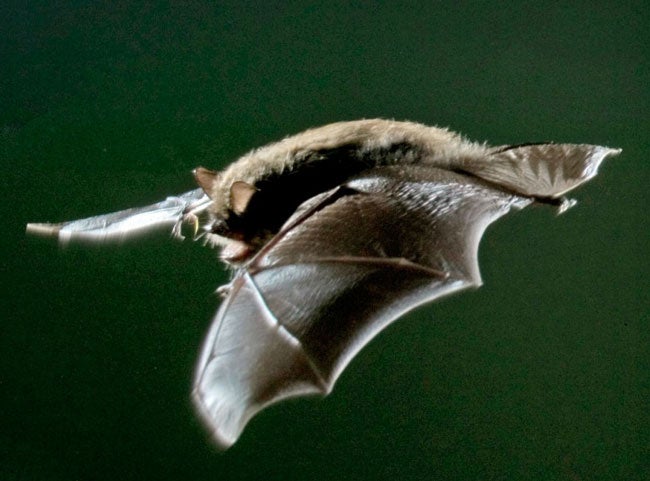Wildlife trusts fix hedges to give bats 'air corridors'

Your support helps us to tell the story
From reproductive rights to climate change to Big Tech, The Independent is on the ground when the story is developing. Whether it's investigating the financials of Elon Musk's pro-Trump PAC or producing our latest documentary, 'The A Word', which shines a light on the American women fighting for reproductive rights, we know how important it is to parse out the facts from the messaging.
At such a critical moment in US history, we need reporters on the ground. Your donation allows us to keep sending journalists to speak to both sides of the story.
The Independent is trusted by Americans across the entire political spectrum. And unlike many other quality news outlets, we choose not to lock Americans out of our reporting and analysis with paywalls. We believe quality journalism should be available to everyone, paid for by those who can afford it.
Your support makes all the difference.Bats follow regular "highways in the air", taking specific flightpaths to travel from roosting sites to feeding areas and back again, in the same way that aircraft use flight corridors to approach and leave airports. A bat's route follows features on the ground such as wooded hedges or strips of woodland, studies show.
The knowledge is enabling a wildlife trust to carry out "highway repairs" for bats, by restoring landscape features which have been destroyed or damaged.
The "bat highways" were discovered during a radio-tracking project run by Frank Greenaway, one of Britain's leading bat experts and a consultant with the Sussex Wildlife Trust, based at Ebernoe Common near Petworth. The woodlands on the ancient common are home to 13 of Britain's 16 bat species, including the very rare barbastelle bat.
By tracking individual animals which were caught and fitted with tiny radio transmitters, Mr Greenaway found that the flightpath of the barbastelles radiated out in different directions from Ebernoe.
The trust hopes to help conserve the species by restoring flightlines which have become broken or interrupted by changing agricultural practices or alterations in the landscape.
"As the evening starts, the bats go out from the dark woodland of Ebernoe Common into the surrounding countryside to forage," said Dr Tony Whitbread, chief executive of Sussex Wildlife Trust. "They need to go under cover as much as possible, and it gets darker more quickly beneath trees, so they fly out along routes with trees. But where there is a gap, they can get picked off by sparrowhawks, so we want to repair the gaps."
Mr Greenaway's research has also shown that bats need much more than their roosting site to flourish. "They require the whole of the landscape in really good condition, because they spend most of the night foraging for insects around the countryside," said Dr Whitbread. "It is a good example of how, if you look at just one species, you can see how important a functioning landscape is, rather than just special sites." Mr Greenaway's findings are enabling the trust to work out a conservation strategy for the Barbastelle's bat, which is one of the country's rarest mammals.
The current population estimate is about 5,000, although it is not known whether the figure is rising or falling. "It used to be thought that there were only three or four roosts in all of the country, and the number is still in single figures," added Dr Whitbread.
"Frank Greenaway, who is internationally renowned as a bat expert, has identified these remarkable flight lines they use, which are invisible to us, although visible to the bats.
"This has not been done before. It will help us work our a conservation programme for the species." The trust has bought some of the farmland and parcels of woodland next to Ebernoe Common which will enable it to "fill in the gaps" of the flightlines used by the Barbastelle bat.
It hopes to work with farmers to encourage them to provide an "inter-connected" countryside, which is a key aim of every wildlife trust in Britain. "To adapt to climate change and the pressures of land use, wildlife will need to move up and down the country in search of suitable habitat and food sources," said John Everitt, the head of rebuilding biodiversity for the Wildlife Trusts movement. "Wildlife has done it all before, after the last ice age, but this time there are unexpected barriers: cities, motorways and expanses of hostile countryside. We need to ensure we give our wildlife room to move or its future is threatened."
Join our commenting forum
Join thought-provoking conversations, follow other Independent readers and see their replies
Comments